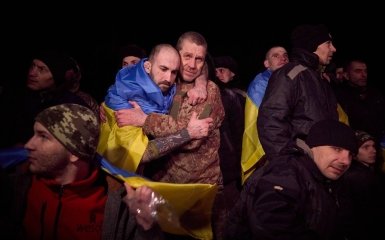Russian officials may have an interest in portraying Russia as a country that adheres to humanitarian and other legal principles.
Why did Russia go for large exchange of prisoners of war
The exchange reportedly took place against the backdrop of several incidents over the past few weeks in which Russian forces used Ukrainian prisoners of war, in clear violation of the Geneva Convention relative to the Treatment of Prisoners of War.
This includes the use of a battalion of former Ukrainian prisoners of war in active hostilities, the use of Ukrainian prisoners of war as human shields, and the extrajudicial execution of Ukrainian prisoners of war who surrendered and were clearly unfit for combat, the analytical report says.
Analysts noted that on 3 January, the largest exchange of prisoners of war in the entire war took place and the first official exchange of prisoners of war in almost five months — since August 2023.
Earlier, Petro Yatsenko, a representative of the Ukrainian Coordination Headquarters for the Treatment of Prisoners of War, said on 17 November that Russia had frozen the exchange of prisoners in the summer of 2023 for an unspecified reason, ISW reported.
According to ISW, Russian officials often have a strong interest in portraying Russia as adhering to humanitarian and other legal norms, and the timing of the prisoner exchange may be part of this broader information campaign, the analytical report says.
Exchange of prisoners of war
On 3 January, Ukraine and Russia exchanged prisoners of war for the first time in several months. Thus, 230 defenders returned to Ukraine. This is the largest exchange since the full-scale invasion.
Among them, 130 are members of the Armed Forces, 55 are members of the National Guard, 38 are members of the State Border Guard Service, one is from the National Police, and six are civilians.
48 exchanged servicemen had the status of 'missing'. The majority of the released persons were men (225) and five women.
Dmytro Lubinets, the Ukrainian Parliament Commissioner for Human Rights, stressed that 2024 marked the beginning of 49 exchanges of prisoners of war. The Ombudsman added that 2,828 defenders are now home.
The last such exchange took place on August 7. In the course of it, 22 soldiers returned home, including two officers, private and non-commissioned officers.
More on the topic
- Category
- Ukraine
- Publication date
- Додати до обраного
The last such exchange took place on 7 August. During this exchange, 22 servicemen returned home, including two officers, privates and NCOs.


